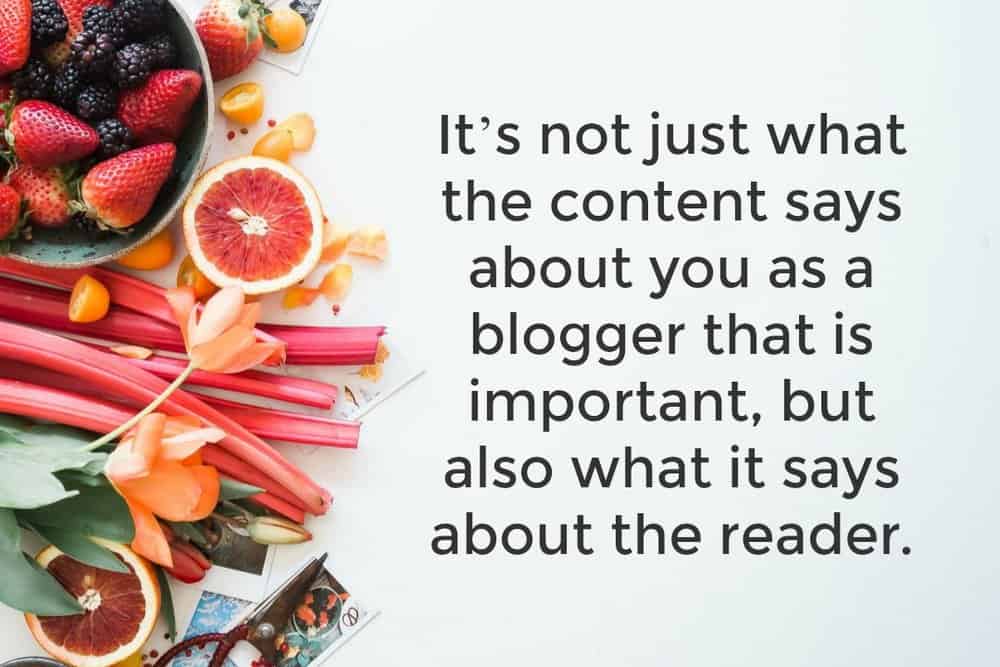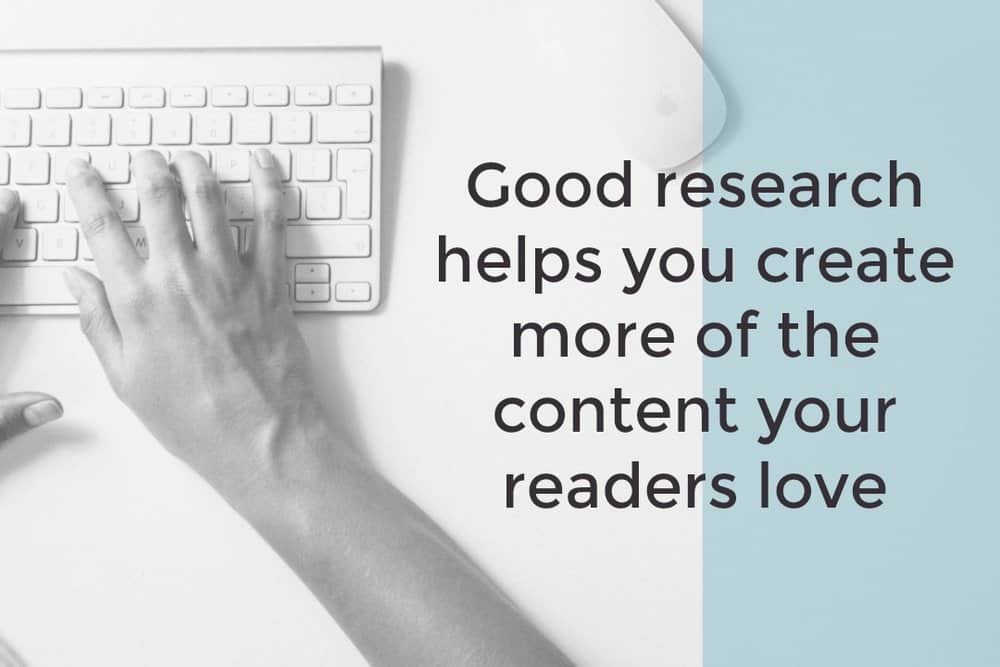How to Plan Blog Content – Understanding your Niche
One of the key ingredients to every successful blog is content. Without content, you don’t have a blog! But how do you keep creating great content, week after week, month after month, year after year? In this post we’ll explore how understanding your blog’s niche and goals can help you plan great blog content your readers will love.
We’ll start with a quick questionnaire. This is going right back to basics, but it’s a really great exercise that I’d recommend doing regularly, whether you’re a new blogger or you’ve been blogging for years. Asking yourself these questions will help you to focus on exactly what you want to achieve from your blog and help you work out what kind of content you should be producing to meet your goals.
You can download your own copy to fill in yourself here, and I’ll go through the questions step by step below.
Describe what your blog is about in one or two sentences
This is pretty self-explanatory, you need to know what your blog is about in order to produce content!
Break your blog down into 3 or 4 topics/types of posts:
You might have more or less – each blog is individual, but having a clear idea of the different kinds of content you want to create can really help with planning a balanced mix.
These can be the categories you have on the blog or more general types of posts, for example tutorials, recipes, serious articles, funny stories, cartoons, photos or videos.
Who do you want to read your blog?
If you want to create content that people are going to want to read, you need to have at least a rough idea of who your ideal reader is.
Ask yourself if your answers to the first 3 questions will bring them to your blog? Are you creating the kind of content that your ideal reader will want to read?
What do you want your blog to be known for?
What’s the first thing you want other people to think of when they see your blog or hear your name?
This might be the same answer as the first question, but it might not! Your blog may have evolved or maybe you want your blog to evolve into something else. Over time you may shift course slightly, or even completely change direction – we all change over the years and our blogs often change with us.
I’ll use myself as an example – I originally started my blog Eats Amazing as a place to record the creative bento lunches I was packing for my son. Over time it evolved to include more recipes and tutorials, and the lunches just became a side topic. A few years ago I realised that I was still stuck with the ‘lunches’ label – that’s all I seemed to be known for, but I wanted to be known for fun food and family friendly recipes. I had to rethink the content I was producing and even the layout of my blog in order to shift the focus and bring my blog in line with my goals. It’s still a work in progress but it helps enormously to know what you’re aiming for.
What do you want your readers be looking for when they arrive on your blog?
All content needs to fulfil a need if you want people to read it. Great content could be:
- Something useful (e.g. a recipe, tutorial or craft)
- Something original/new – introducing new ideas and concepts
- Something entertaining (e.g. funny stories, images or memes)
- Or any kind of story (this could be told in words, images or video)
- Something that triggers an emotion, that readers can relate to, whether it be happy, sad, funny or an ‘aha’ moment.
Something else that’s really important to consider – does your content make the reader look good to their friends if they decide to share it? Have a think about what and why we share on social media as personal users – everything we share, be it a personal photo or an article we’ve found, is telling the world who we are and what we believe in.

Some examples of this – if we share an article that’s about parenting in a particular way, we’re sharing our point of view on that subject. If we share a cool craft that we found, we’re telling our friends that we are a creative kind of person that likes to makes cool crafts. When we share a funny meme, we’re sharing our sense of humour, or if we share a money saving post, we’re telling the world we’re savvy. This may be completely subconscious of course, but we, and our readers, all do it!
It’s not just what the content says about you as a blogger that is important, but also what it says about the reader.
How do you want your readers to find your blog?
This is a big factor when planning content, as different platforms need different types of content.
- Google needs plenty of words to help with SEO and the content needs to be something people will search for. Lots of images are also useful as people may find you through image search.
- For Facebook, video is doing particularly well at the moment, especially if the video is short and sweet (I’ve found 1-2 minutes long do best for me – people are on Facebook to be entertained, but don’t necessarily want to spend hours watching videos there). A square format for photos and videos often does best, links to articles can do well, especially if there is an eye-catching image in the post preview and memes are highly shareable on Facebook.
- For Pinterest, a vertical or tall pin image for your blog post is a must. Anything goes on Pinterest, people go there to search for crafts, recipes, makeup, fashion, parenting advice, travel, money saving tips – the lists goes on! Roundups do really well on Pinterest too, for example top 10 lists of tips, recipe, crafts etc. I often create round-up posts with Pinterest in mind, they can bring some great traffic.
- On Instagram, photos can be any size but square photos are still the most popular. Videos can also do well, but they must be under a minute long.
- YouTube is a completely different story – longer chatty videos do best, whether they be tutorials or more general videos. People on YouTube want to see your face!
It may all seem a bit overwhelming, but you can use the same content and repurpose it in different ways. Say for example you’re creating a tutorial or recipe post. You could create a video for it, keeping in mind how you want to use it when filming the initial footage. For YouTube, you might want a longer, slower video which includes all the information, perhaps with some face to camera shots too. Before you start, think about how you might use the same footage for Facebook and Instagram – is it worth filming a top-down view of your hands as well so that you can create a short ‘Tasty’ style video with the same footage?
While you’re filming, is it possible to grab a few step-by-step photos for the blog post? When you’re photographing the final product, think about where you want to use the photos and take a variety of shots and angles. You might want landscape photos for the blog, portrait photos for Pinterest, square photos for Instagram, and maybe even a behind the scenes shot for your Instagram stories.
Planning ahead before you start allows you to create multiple pieces of content at the same time to use in different ways for different audiences.
Having said that, don’t feel like you have to do it all – there’s a lot to be said for concentrating on the things you’re best at!
Further Research
On the second page of the questionnaire you’ll find some further questions to help you research and learn more about the kind of content that is already doing well for you. You can use this to check that you’re on the right track and to get a clearer idea of what your readers love about your content, which can help you create more of the same!

What do other people think your blog is about? What is the first thing that springs to mind when they think of your blog?
Ask your blogging friends, readers you know in real life e.g. friends and family and maybe even think about creating a reader survey to check that the rest of the world perceives your blog as you want them to!
A reader survey can also be really helpful in planning blog content – ask your readers what they would find most useful or what they would like to see more of on your blog.
What are the highest referrers of traffic to your blog?
In Google analytics, click on Acquisition – overview to see where your traffic is coming from. Click on Social for a breakdown by platform – this can really help you see what kind content is most popular on each platform and what brings you the most traffic.
What are the top 20 most popular blog posts on your blog? (In the last 30 days, last 6 months & over the last year)
In Google analytics, click on Behaviour – Site Content – All Pages. Knowing what is popular can help you find out what your readers most respond to so that you can plan more of the same kind of content. Seasonality can make a big difference, so it’s worth looking at what is doing well right now (and also what was popular at this time last year) as well as longer term trends.
I hope you’ve found this exercise in exploring your niche useful, it’s something I do regularly (at least once a year) and I’ve found it really helpful to keep my blog content on track.
In my next post I’ll be talking about how I plan blog content, some of the tools I use to keep track of my ideas, where to find inspiration and how to avoid writers block.

